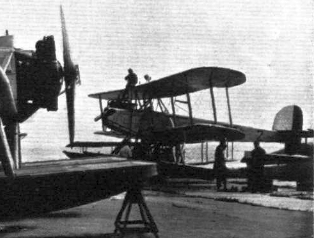Related Research Articles

The Gloster Gorcock was a single-engined single-seat biplane fighter aircraft produced to a United Kingdom Air Ministry contract completed in 1927. Only three were built.
The Handley Page Type B was an unusual single-engined pusher biplane built by Handley Page at the commission of a Liverpool patent agent. Damaged before its first flight, Handley Page disowned it, but it was rebuilt and flew for a time in 1910 as the Planes Limited Biplane.

The LFG V 60 was a small, single engine, tandem seat floatplane training aircraft, designed and built in Germany in the mid-1920s. About five were constructed.

The Potez VIII was a French training aircraft which first flew in 1920. Originally it had a very unusual vertical inline engine and a four-wheeled undercarriage, though the production version was more conventional.
The SNCASE SE-700 was a three-seat passenger autogyro designed during World War II. Two were completed but only the first flew and the programme was soon abandoned.

The SABCA Demonty-Poncelet monoplane, Demonty-Poncelet limousine or SABCA-DP was a Belgian light aircraft first flown in 1924. It had two comfortable side-by side seats in a glazed cabin. Though it had competition successes in 1924 and 1925, it did not go into production.
Kawanishi's first aircraft, the Kawanishi K-1, was designed as a mail carrier. It was the first Japanese aircraft to receive a Certificate of Airworthiness from the Aviation Bureau. It won a prize in a national contest but was not a commercial success and only one was built.
The Kawanishi K-10 Transport was a 1920s Japanese passenger and mail transport. Two were built, one briefly serving a route between cities in Japan, Korea and China.
The Kawanishi K-6 was a passenger-carrying biplane floatplane, built in Japan in the 1920s. The sole example took part in an around Japan flight then flew as a transport with Japan Aviation.
The Kawanishi K-3 was a Japanese, fast, multi-purpose civil transport aircraft from the early 1920s. Despite its good performance it was eclipsed by the release of Army surplus machines and only one was built.
The Itoh Emi 2 was a revised and cleaned up development of his first aircraft, the Itoh Emi 1.
The Itoh Emi 3 was the first Japanese civil passenger carrying seaplane, flown in 1917 and used for commercial demonstrations and passenger flights.
The Itoh Tsurubane No.1 was a single seat aviation demonstrator and trainer biplane first flown in Japan in 1918.
The Itoh Emi 9 was a two-seat Japanese training biplane built in 1918.
The Itoh Emi 14 was a Japanese biplane designed in 1920 for a long distance competitive flight from Tokyo to Osaka and back, which it won. It was also successful at a contest later that summer, before suffering terminal structural failure during aerobatics a few weeks later.
The Itoh Emi 16 Fuji-go (Fuji), built in 1920, was intended as a cheap and simple general purpose civil biplane but gained publicity with exhibition flights and successful speed and altitude contests against higher-powered fighter aircraft.
The Itoh Emi 29 Taihoku-go was a 1920s Japanese civil transport with its two passengers in a enclosed cabin. It was the first of this "limousine" type to be built in Japan; the only example flew the Osaka-Tokyo route for a while.
The Itoh Emi 30 was a small, single-engined, sports biplane built in Japan in 1922. Though it attracted attention by being the smallest Japanese aircraft of its time, the sole example was mostly used as an aerobatics trainer.
The Itoh Emi 31 was a one-off Japanese civil flying boat first flown in 1922. Operated by an airline on a scheduled route for two years apart from a short break serving a newspaper, it could carry up to three passengers.
The Fukunaga Tenryu 10 was the largest Japanese civil passenger aircraft when it first flew in 1922. Its passenger cabin seated four.